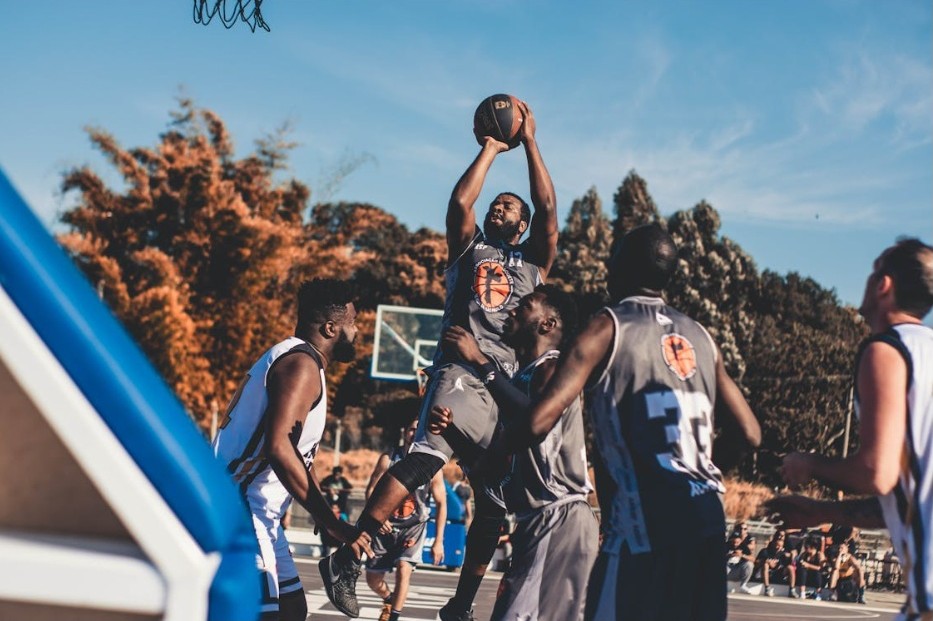Gamified Training Methods That Can Transform College Basketball Teams
Gamified Training Methods That Can Transform College Basketball Teams
Gamification has led to some very positive results across multiple industries, education systems, and even in sports. It’s an elegant way to put a new spin on repetitive drills, and it can also be used to give accurate feedback on students’ progress.
The core concept is quite simple: by giving some sort of additional motivation for seemingly menial tasks, they can become more fulfilling. This is something that the best online pokies real money NZ casinos do very often through VIP programs. Users have missions that require them to play specific pokies each day, and if they do, they earn points. These points help them level up or advance through VIP tiers and unlock various perks and even personalized rewards. But are there gamified training methods that truly work in practice? Well, let’s discuss.
What Is Gamification in Sports Training
Gamification in training simply means taking the mechanics or reward systems of games and applying them to practice. The idea behind it is simply: people will appreciate something more if they feel they earned it. Instead of couch saying we will transition to a more demanding training, he goes- congrats, you’ve unlocked advanced lessons. It’s a technique that works in multiple scenarios. Casino game studios do this often whenever they add a bonus round. Almost all the best Aussie online pokies give players a chance to trigger a bonus, and because it’s difficult to get it, whenever you land on the right symbols, it feels really good.
The idea is not new. Many coaches have been adding playful elements into training, such as timed shooting challenges where players race against the clock, or “knockout” style competitions that eliminate participants until one winner remains. What is new is the technology that makes feedback instant and progress measurable. Wearables can now track shooting percentages or sprint speed, converting raw data into achievements and badges. For student athletes who grew up in a digital environment, these methods feel more natural.
Benefits of Gamified Training for College Basketball
There are several key advantages that coaches will notice should they decide to pivot to more gamified training methods.
Boosting Motivation and Engagement
When things become too repetitive, our focus starts to drop, and the whole training session begins to resemble a chore. Through leaderboards that highlight improvement in conjunction with progress training drills for basketball teams become more engaging. Weekly shooting rankings that detail specific improvements and small gains that move a player up the board serve as a neat visual representation of how players upped their game.
Improving Skill Development
Breaking training into small, measurable goals or milestones positively affects motivation. Anyone who works on copious projects will confirm this. When you have a seemingly insurmountable task, it can look daunting, but once you segment it into meaningful and easily achievable chunks, things become a lot easier.
For example, a guard in a fast break drill earns points for an assist and loses them for a turnover. The instant feedback encourages players to repeat skills until they master them or reach a certain number of points. In basketball, this translates to smarter decisions under real game pressure.
Increase Team Cohesion
Gamification techniques could also improve teamwork. In group drills, players score points only when everyone completes their role, leading them to coordinate better and rely on one another. This shared success creates trust during practice and carries into the real games.
Tracking Progress and Performance Data
Performance analytics in basketball creates more meaningful feedback. Sometimes, when you have a losing streak, it’s difficult to see that you are still advancing. With comparative analytics, you can see that this isn’t necessarily the case. Wearables and apps track shooting accuracy, sprint speed, and recovery time. Keeping these measurements and comparing them with historic data also helps coaches. They get a better view of every player’s progress, and athletes follow their improvement through rewards.

Practical Gamification Strategies for Basketball Programs
There isn’t really a one-size-fits-all approach to incorporating gamification into basketball training. That said, here are some suggestions that seem useful, or that serve as a good basis for how to go about it.
Point-Based Drills
Points for speed and precision make a standard college basketball training feel like a competitive game. For example, in a timed shooting circuit, players earn extra points for consecutive scores and lose points for missed shots. This really puts an emphasis on hot streaks that require both focus and steadiness. On top of that, they get to test themselves against the clock and one another.
Levels and Badges
As their skills develop, they should face tougher drills that build on the basics. Progress feels a lot like moving up levels in a game, with fresh challenges and rewards. Titles such as Fast Break Master for quick transitions or Defensive Anchor for lockdown defense reward particular skills and give athletes targets worth chasing. This sense of progression pushes them forward while still reinforcing the fundamentals.
Leaderboards and Rankings
Digital leaderboards in the locker room or team apps can show real-time results from every drill. The rankings fuel friendly competition while teammates work to move up, but they also show steady progress, making sure recognition goes to consistent improvers as well as top performers.
Simulation and Virtual Reality
Virtual reality gives athletes a chance to train for high-pressure moments in a controlled, but lifelike environment. They can practice buzzer beaters with the noise of a roaring crowd in their headset, or run defensive sets against virtual opponents that adjust on the fly. These sessions grow confidence and sharpen decision-making, making real games feel familiar.
Challenges and Considerations
Even though there are a lot of benefits, gamified training isn’t without risks. Too much focus on competition may cause friction between teammates, especially when leaderboards are in focus. The real test is making the process fun and motivating without losing balance. Ultimately, gamification should complement the basics of basketball team performance, not replace them.
Studies Confirming the Benefits of Gamification
Evidence from broader programs shows that gamification drives both fitness and keeps participants engaged. During one of the studies, one group of students followed a gamified training model for 15 weeks. Their cardiorespiratory fitness improved by about 5.0 ml/kg/min compared to participants in non-gamified sessions.
There was also a study where researchers analyzed 16 different studies, created from 2010 to 2020, and concluded that sports gamification did lead to improvements related to physical activity. What is especially interesting in this study is the impact after the testing period. It showed that it had an impact even after, but the effect gradually wore off.
A recent field experiment on gamified exercise found that structured rewards increase short-term effort and keep people engaged.
Key examples of benefits include:
-
Improved shooting percentages and stamina through performance-tracking apps.
-
Faster skill development driven by AI and advanced analytics.
-
Higher fitness levels confirmed in controlled college studies.
The concept applies beyond sports, where gamified systems encourage people to keep moving forward.


